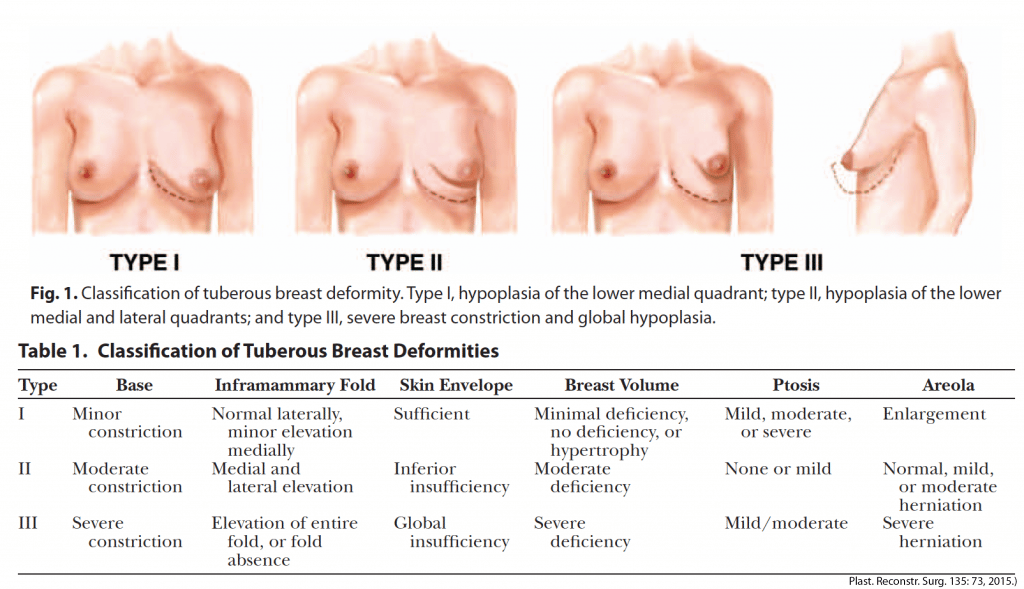Tuberous Breast Deformity: Classification and Treatment
Written by
21 November 2021

Tuberous breast deformity is a congenital breast anomaly (the result of abnormal development) which can present itself from a mild to a severe occurrence.
While not extremely common, there are women who have tubular breasts. Many of these women don't even know they have them. While tubular breasts may not pose any direct health threats, some women may elect to have them corrected.
Features that make up tuberous breasts are:
Tubular breasts are diagnosed by looking at how the breasts look. Researchers are still learning about tubular breasts, so it is a somewhat subjective diagnosis that can take several forms. What tubular breasts have in common is that they have little or no breast tissue in both the vertical and horizontal directions.
Tubular breasts can have a big separation between them and it can be hard to tell where one cup ends and the other one begins. The area around the nipple can seem tiny and constricted, or it may look as if it has collapsed altogether. The larger, darker area of the areola might look enlarged.
A pair of tubular breasts can often look asymmetrical, as one will appear noticeably larger than the other. In addition, they may appear to be oval, pointed, or square shaped – rather than round.

Correction of this problem can be challenging and requires a very careful surgical plan.
Various approaches have been used, from trying to reshape the constricted breast tissue to complete removal of the breast tissue and replacement with an implant.
Correction of an elevated breast fold is complex as it may result in bottoming out or double bubble formation, and future touch-ups may be required to complete the repair.
Our preferred approach is to remove the constricted tissue at the time of the breast augmentation, to allow for the soft skin to stretch and accommodate the breast implant which then helps to reshape the breast.
When patients have only one tuberous breast, achieving symmetry is exceptionally difficult and patients need to understand that the goal of the surgery is to improve, not completely correct the asymmetry.
While there is nothing medically concerning about tubular breasts, some people choose to have surgery to improve their breast shape and appearance. Before you make a decision, it's important to do your research and find a surgeon who has experience with this type of surgery.